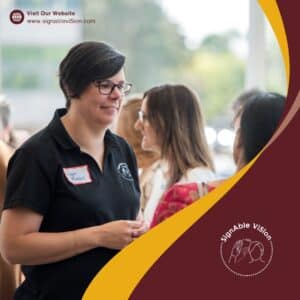
There’s been quite a buzz recently over a billionaire’s Twitter comment under a post questioning the use of sign language in videos when captions are available. This situation has significant influence and could have concerning effects on those who share similar sentiments. It might lead to a lack of accommodations in workplaces and the media.
But let’s delve deeper into this issue. English and American Sign Language are distinct languages, each with its own nuances and richness. While captions can convey spoken words, they often fall short in capturing the depth of sign language. Sign language utilizes facial expressions, body language, and gestures to convey subtle meanings and emotions. It’s not just about translating words; it’s about expressing tone and emotion through visual cues. The interpreters are adept at conveying these nuances through their facial expressions and the way they emphasize certain signs, ensuring that viewers receive a more complete understanding of the message being conveyed.
The inclusion of sign language in videos isn’t redundant; it’s essential for accommodating individuals who rely on it as their primary means of communication. It ensures that everyone, regardless of their preferred mode of communication, can fully engage with the content. Sign language isn’t just a translation of spoken language; it’s a language in its own right, with its own grammar, syntax, and cultural nuances. By incorporating sign language, we recognize and validate the linguistic diversity of the deaf and hard of hearing community.
It’s worth noting that not every deaf person who relies on sign language is fluent in English. Some may experience language deprivation, lacking fully developed English skills. For them, sign language isn’t just a preference but a necessity for effective communication. By providing content in sign language, we bridge communication gaps and ensure equal access to information and entertainment for all individuals, regardless of their language background.
Relying solely on captions overlooks the fact that many individuals may prefer or require sign language for comprehension. It’s not merely a matter of convenience; it’s about accessibility and inclusivity. Sign language offers a more immersive and natural mode of communication for many deaf individuals, allowing them to fully understand and engage with the content.
While some may be unaware of these nuances, I’m here to provide education and promote understanding. By raising awareness about the importance of sign language inclusion, we can foster a more inclusive and accessible society where everyone feels valued and included, regardless of how they choose to engage with content. Advocating for sign language in videos isn’t about disregarding captions but recognizing the diverse communication preferences within the deaf and hard of hearing community. It’s about ensuring equal access and creating an environment where everyone can participate fully. By embracing sign language alongside captions, we foster a more inclusive and accessible society where everyone can participate fully.



